To fully appreciate Scottsdale, it’s important to learn about the area’s first residents, the Indigenous people. Native American cultures saw beyond the desert’s harsh exterior, finding ways to live in harmony with the land and creating a civilization that lasted longer than America has been a country. Their ancestors have continued that legacy. These are vibrant and essential voices telling the Scottsdale story. Here are a few suggestions on how to learn more about the Native American cultures in and around Scottsdale.
S’edav Va’aki Museum
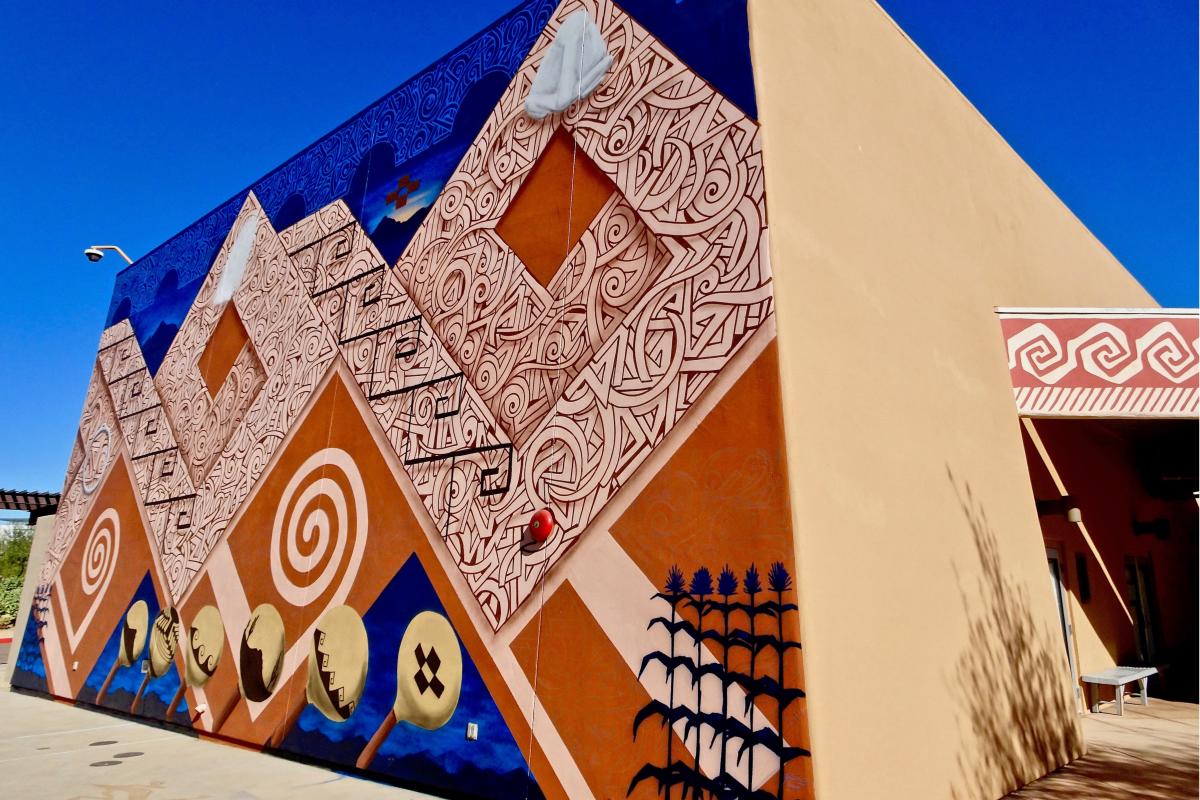
This 1,500-year-old archaeological site makes an excellent starting point. Adjacent to Sky Harbor Airport, this village was once inhabited by the ancestral Sonoran Desert people, known to archaeologists as Hohokam. Visitors can walk a loop trail exploring a platform mound, ballcourt, replica houses, demonstration garden and ancient irrigation canals. The canal system built by the Hohokam would become the basis for the founding of Scottsdale and Phoenix centuries later. Exhibits inside the museum provide additional insight into how these resourceful people lived in the desert.
Heard Museum
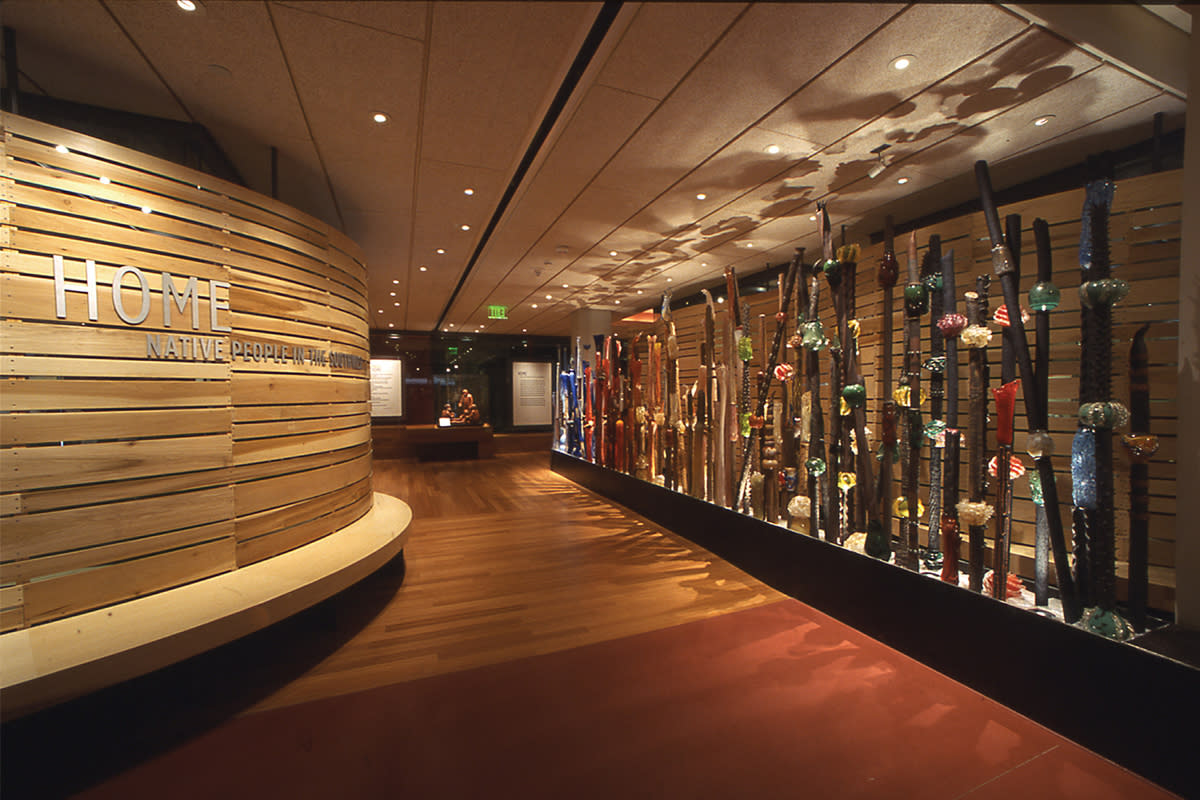
This world-famous museum features art from many different Native American tribes. The Heard’s signature exhibit, “HOME: Native People in the Southwest,” is complemented by six to eight changing exhibits each year that cover topics ranging from social issues and cultural artifacts to contemporary art. Every March, you can meet and talk with hundreds of Native American artists who show and sell their work at the Heard Museum Guild Indian Fair & Market.
Discover Salt River Visitor Center

Nestled alongside Scottsdale’s eastern border is the Salt River Pima-Maricopa Indian Community (SRPMIC), comprised of two distinct tribes—Akimel O’odham (Pima) and Piipaash (Maricopa). Despite different cultures and languages, the tribes have been allied for many generations, living first along the Gila River and later the Salt River. The small Discover Salt River Visitor Center, tucked away in the Pavilions at Talking Stick shopping center, is the perfect spot to learn more about the community, which features some of Scottsdale’s most popular destinations. The wide range of attractions includes Odysea Aquarium, Butterfly Wonderland, Pangaea Land of the Dinosaurs, Great Wolf Lodge, Talking Stick Resort, Topgolf, Medieval Times, and Salt River Fields just to name a few.
Huhugam Ki Museum
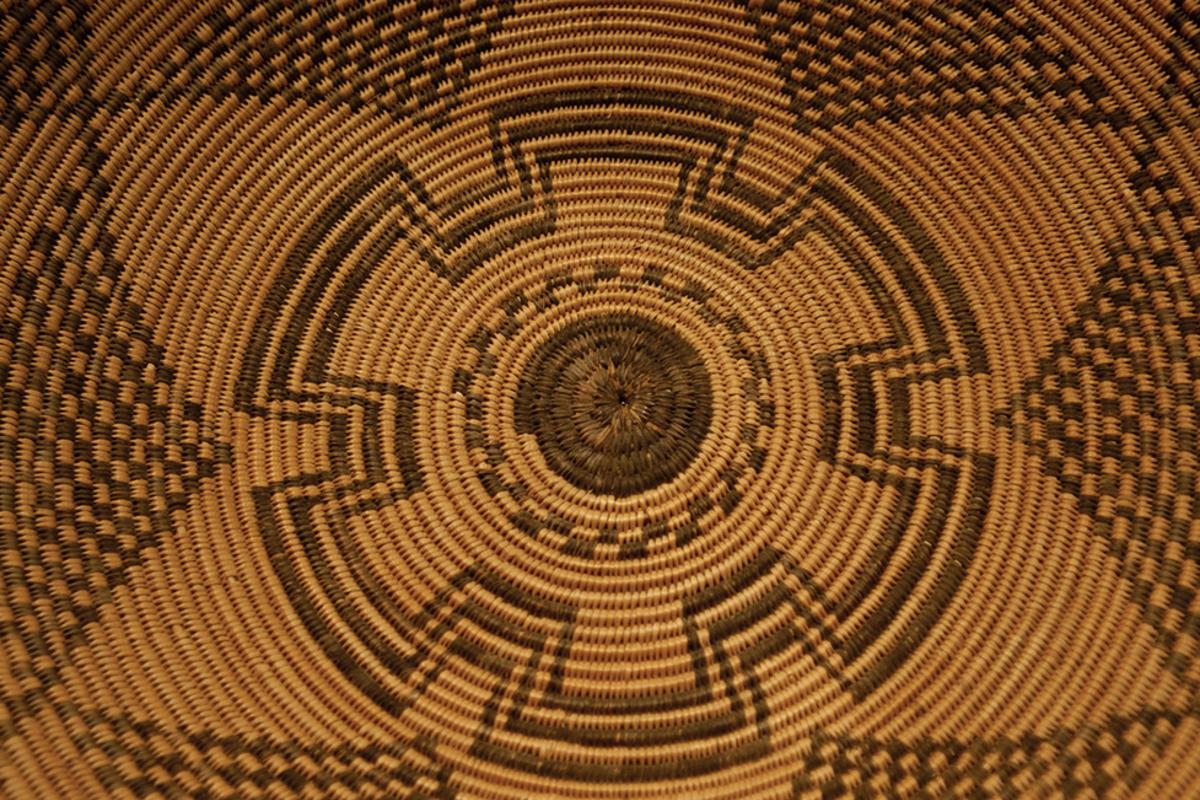
Another key piece of the SRPMIC is the Huhugam Ki Museum, or House of the Ancestors in the O’odham language. Constructed of adobe bricks, the rustic museum contains exhibits that highlight the rich heritage of the O’odham and Piipaash from the times of Hohokam culture to the achievements of today.
Cultural Center at Talking Stick Resort
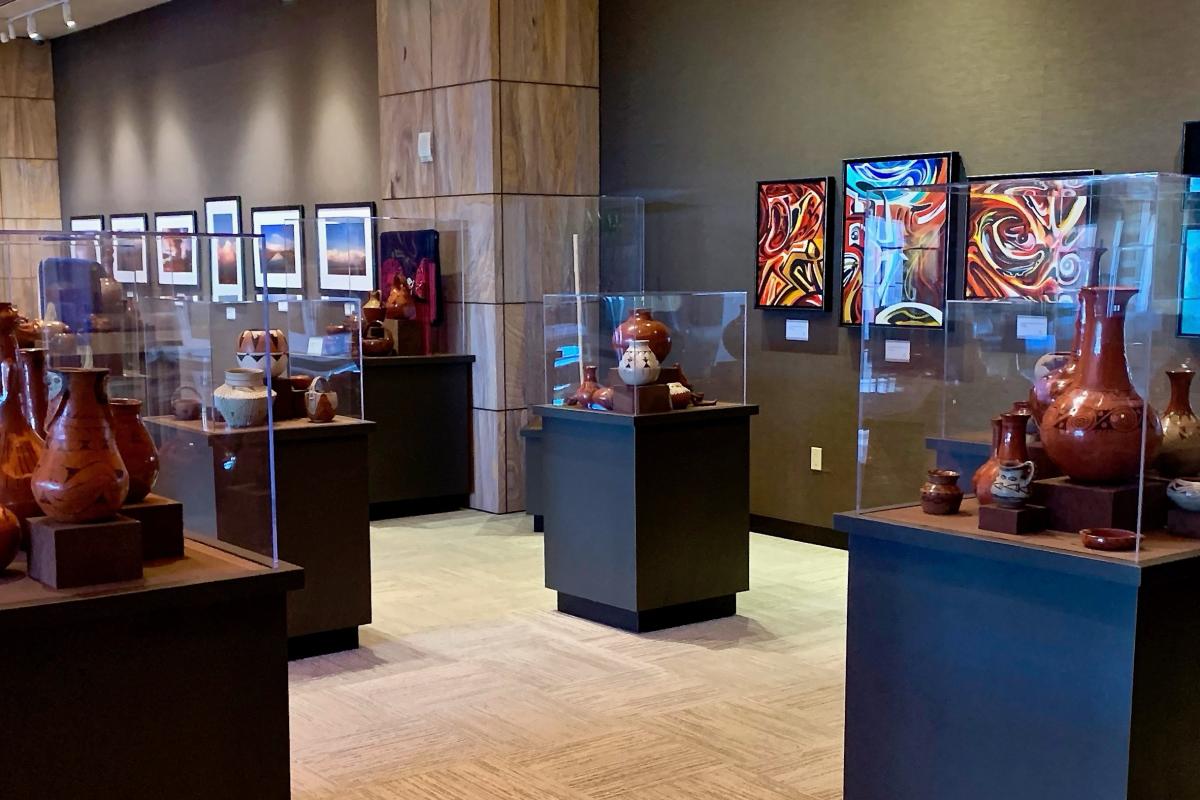
Amid the hustle and bustle of the popular casino and resort, it’s easy to overlook this quiet corner full of vibrant color and design. But make the effort to seek out an astonishing collection of native art located in the resort lobby. The Cultural Center features pottery, baskets, jewelry, paintings, and photography. Reflecting the O’odham and Piipaash ancestry, the collection is considered one of the largest of contemporary Native American art found outside of a museum.
Native Art Market
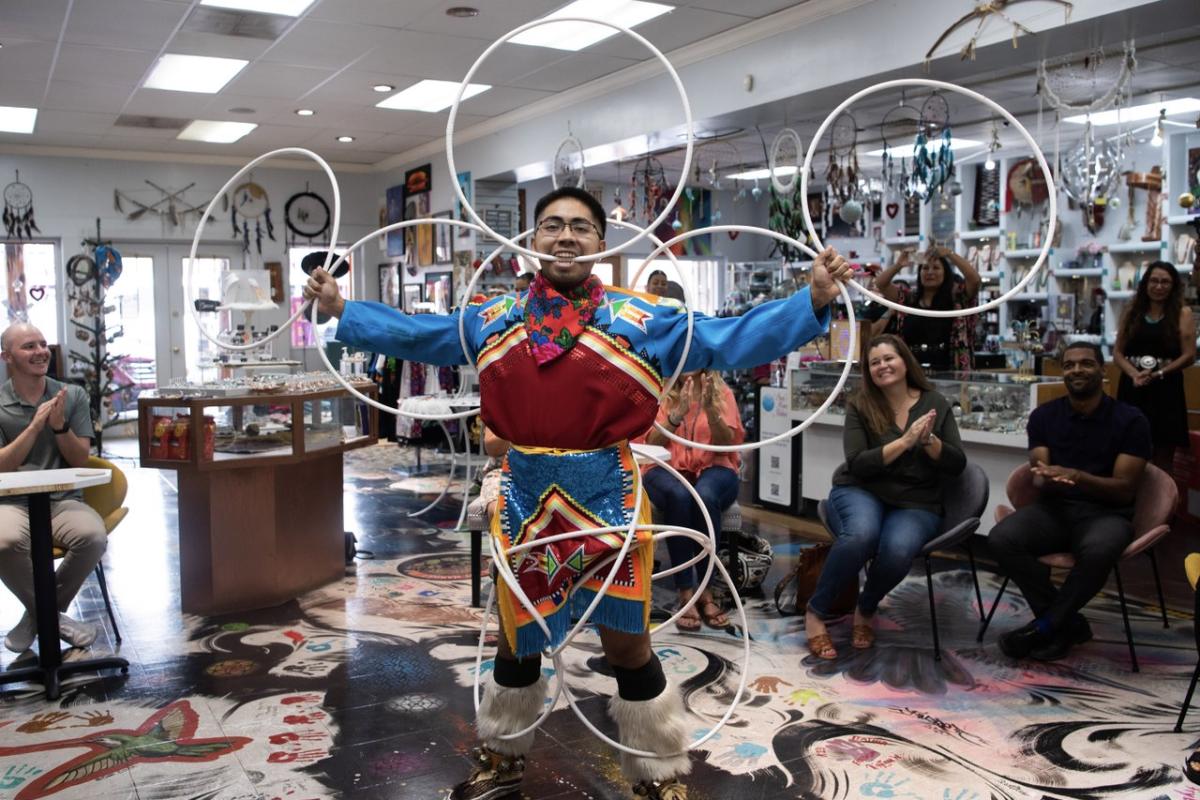
Located in Old Town Scottsdale, the Native Art Market is Indigenous owned and operated. The venue features the handmade work of more than 300 Native artisans. It is an arrangement that allows more of the money spent on purchases to flow directly to the artists. Patrons often enjoy live performances of music and dance from the stage. Check the calendar for weekly events. During winter months, Native Art Market hosts a seasonal marketplace complete with performers, food, and artists on weekends at the Pavilions at Talking Stick.
Cathedral Rock Metates
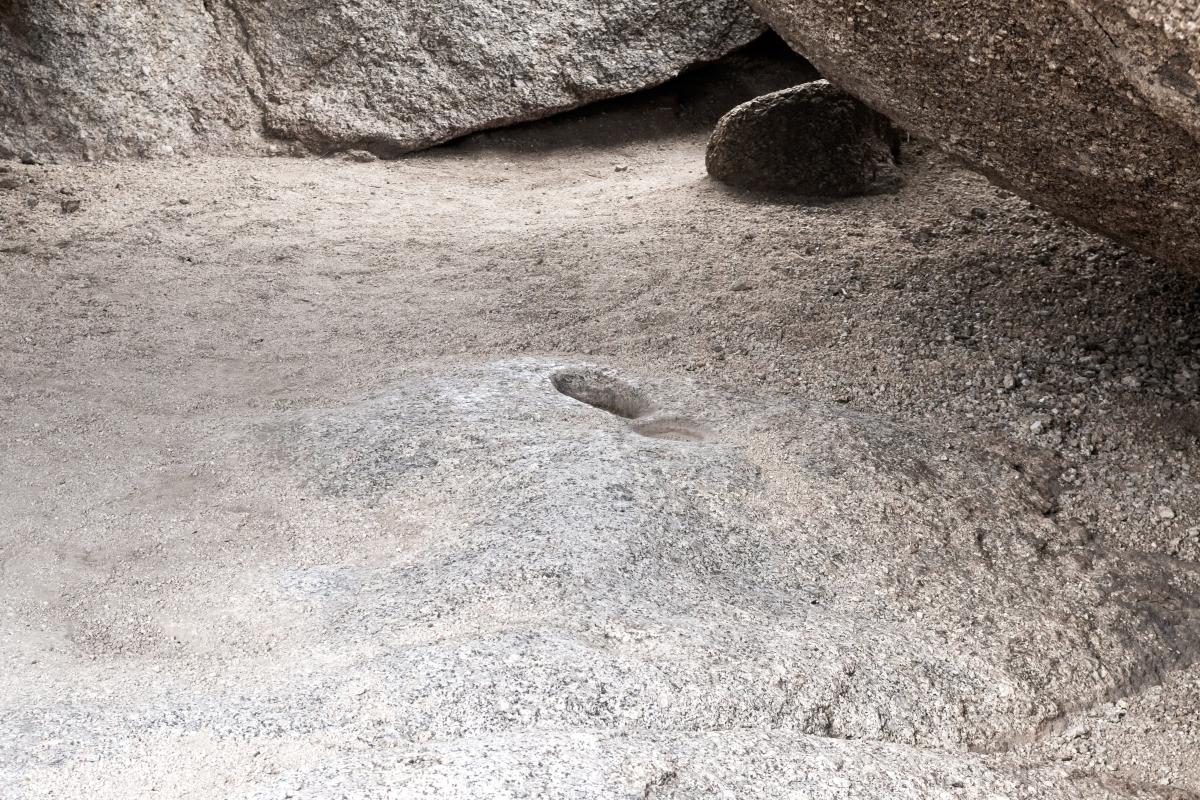
Of course, the cultural identity of early inhabitants is tied directly to the land itself. There is no understanding them without understanding the desert. While several heritage sites can be visited, there is something very intimate about hiking to Cathedral Rock in Scottsdale’s McDowell Sonoran Preserve. A collection of tilted stone slabs form Cathedral Rock on the west flank of Cholla Mountain. Step within the confines of the monoliths and feel the temperatures plunge. A collection of windows and shady grottoes create an ancient version of air conditioning with cool breezes funneling through openings in the rocks.
Naturally, this has been a gathering spot since ancient times. Away from the desert sun, look for metates, shallow indentations in bedrock where Native Americans would grind food such as mesquite pods. How welcome this spot must have been centuries ago. Don’t be surprised if you hear faint echoes of distant conversation and laughter. The past doesn’t seem so long ago because of shade and a breeze.
Roger Naylor is an Arizona travel writer and author. His latest book is Arizona State Parks: A Guide to Amazing Places in the Grand Canyon State. He is a member of the Arizona Tourism Hall of Fame. For more info, visit www.rogernaylor.com.





